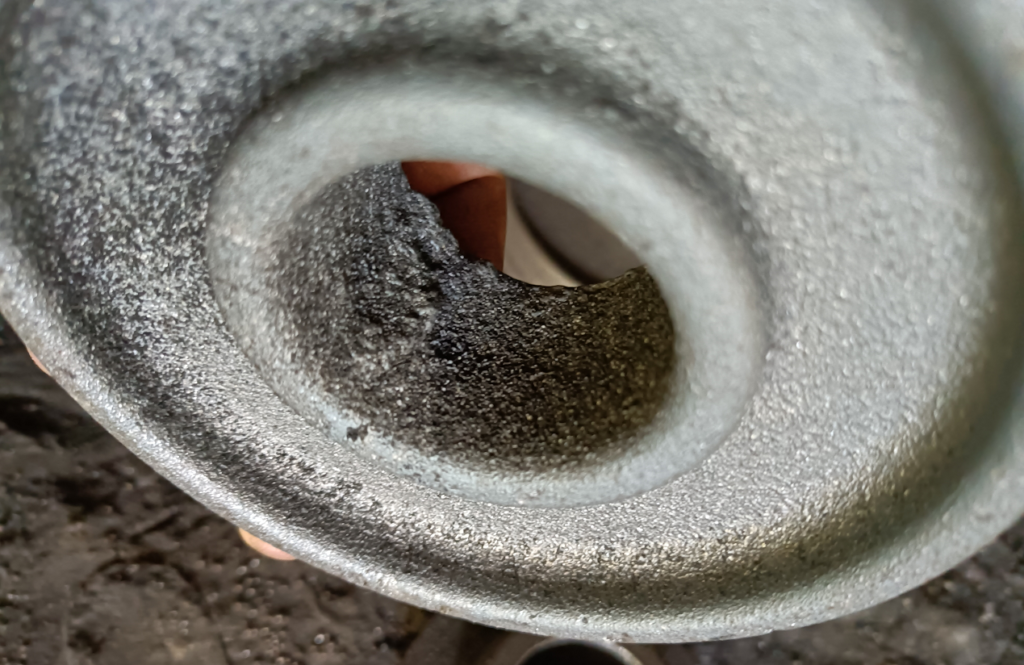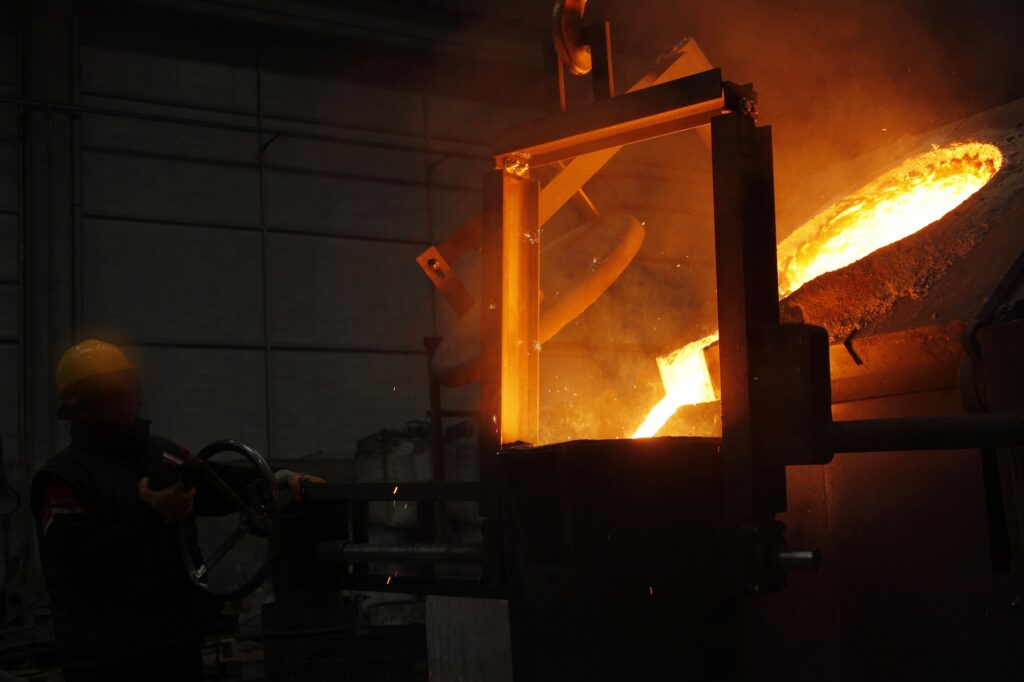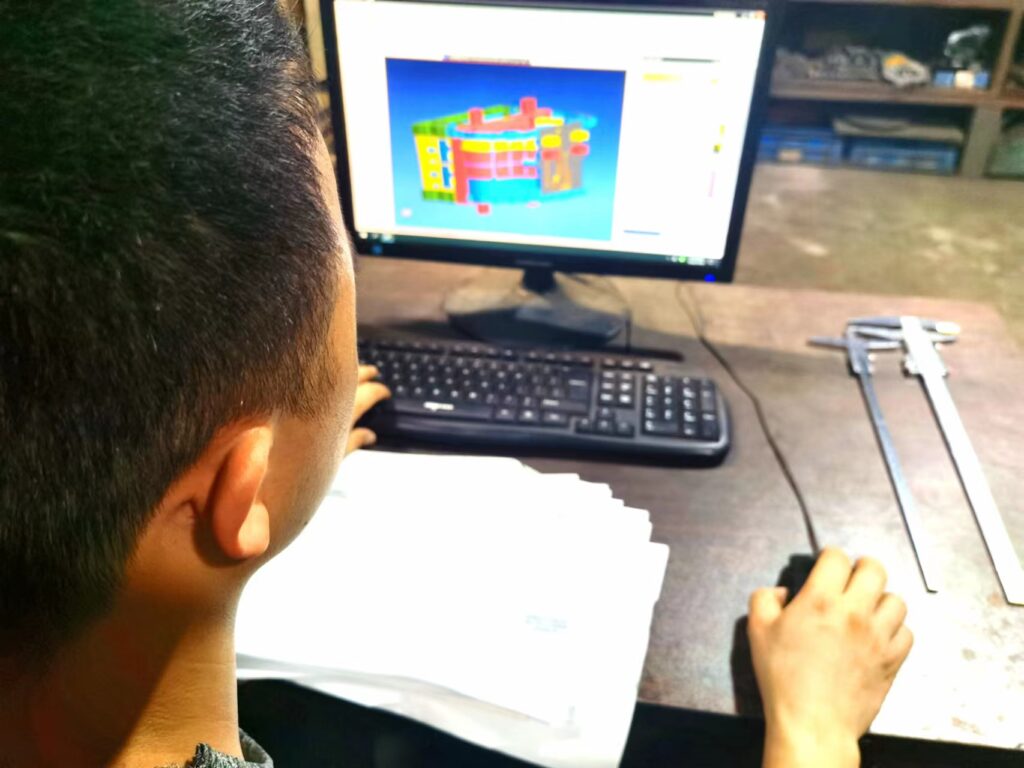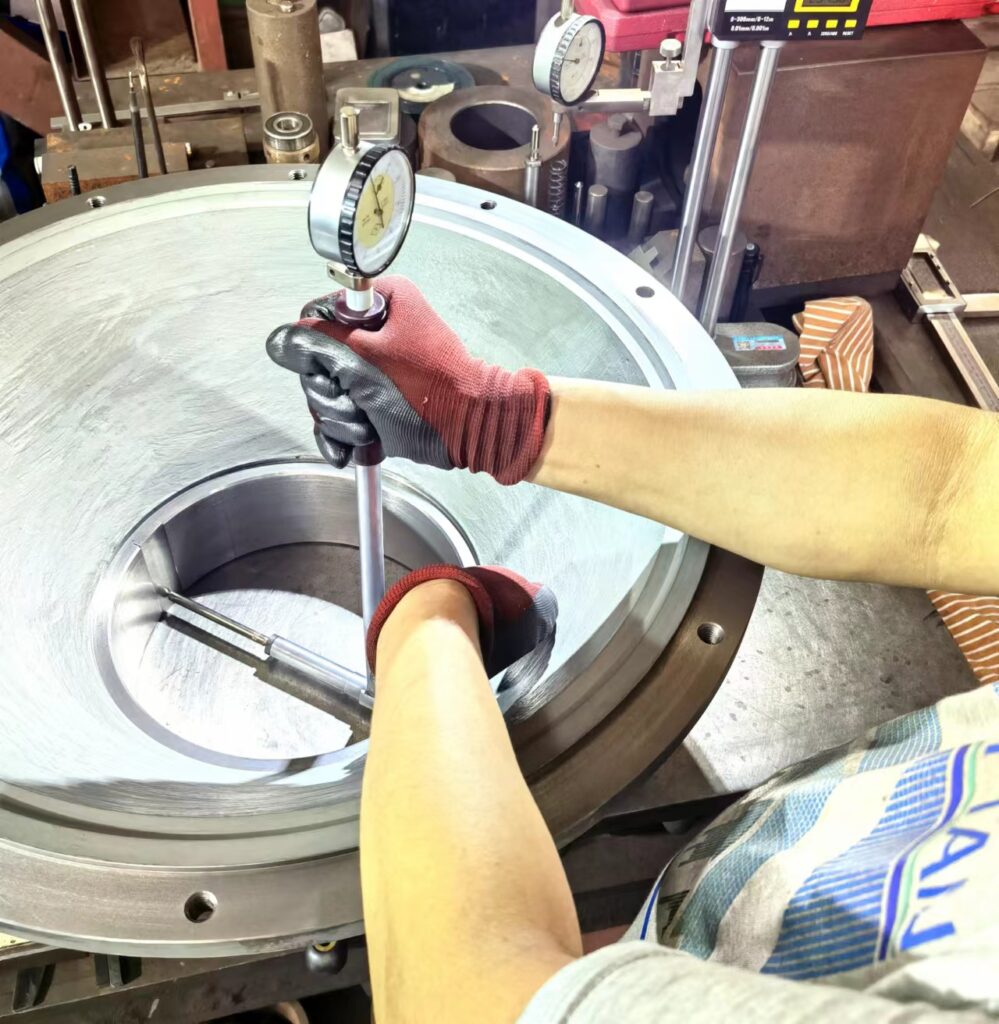Introduction
Poor quality iron castings can seriously affect the machinery and products that utilize them. Lower-grade iron castings lack the structural integrity of higher-graded options and are more likely to contain defects, such as porosity or air bubbles trapped in the metal.
As these defects become exposed during machining, they can lead to breakage, cracks, poor surface finishes, and various other problems. To ensure your products are of the highest quality, it’s important to use the best castings available to avoid these costly issues in the future.
Problems with Poor Quality Iron Castings
Working with poor-quality iron castings can create a domino effect of issues that cost time and money and even put safety at risk. From poor surface quality to accuracy problems and beyond, here are some specifics you should watch out for in machining these less-than-ideal components.
Porosity
Porosity is an age-old problem for iron castings, causing numerous difficulties during machining. These tiny air pocket voids in the metal weaken it, making it more fragile and prone to cracking. Not only that, but these pockets also decrease the metal’s strength, which negatively affects its overall performance quality.
To avoid the issues associated with porosity, it’s essential to ensure these pockets don’t form before machining. As such, time and attention must be devoted to production processes to reduce the risk of susceptibility to this common problem.

Porous iron castings can be a pesky problem in production, interrupting the process and potentially causing difficulties in machining down the line. Luckily, awareness of their formation is key to prevention–porosity can occur for several reasons, all related to casting alteration.
Whether it’s improper gating and venting during the process, inadequate mold preparation, or incorrect pouring temperatures, identifying these potential issues before they become problems is essential. Once machining occurs, though, it’s important to use extra caution since too much pressure on the weakened metal could cause it to break apart.
By understanding porosity and acting proactively when making refinements to the casting process, firms can ensure that castings are produced with precise results and minimal imperfections.
Shrinkage
Poor-quality iron castings can bring with them an array of issues, including shrinkage. When the metal cools and contracts unevenly during the casting process, it results in unsightly cracks or deformities that can prove difficult to make right through machining.
The result is terrible iron castings that can cause considerable losses in time and money if not caught early on. Therefore, manufacturers must choose only top-notch materials for their production facilities to avoid the unfortunate effects of shrinkage.

Shrinkage defects can be caused by several factors in the casting process, from incorrect gating and riser design to improper pouring temperatures. When machining iron castings that have suffered from shrinkage, having the right tools is essential to getting the job done right.
Sharp and precise tools are required to avoid further damage or breakages while giving you a good quality finished product. When machining shrunken iron castings, having access to quality equipment makes all the difference!
Surface Defects
Surface defects on iron castings can lead to serious accuracy issues for machining projects—like rough surfaces, pits, and cracks. Not only do they disrupt tool movement when machining, but such measurement inconsistencies make it extra challenging to produce reliable results.
Unfortunately, these common issues can easily occur when the quality of the castings is poor. That’s why a close eye must be kept on the casting process to ensure accuracy and quality are maintained in each step of production.
When it comes to machining iron castings with surface defects, prevention is key. Thoroughly cleaning the rough spots on the castings before starting work will go a long way in avoiding future problems. Improper mold preparation and inadequate cleaning during casting can create rough areas that lead to surface defects.
Taking the time to clean and smooth out these areas before you start working can save you plenty of time and money in the long run. While it may seem like an unnecessary task upfront, this simple step sets the foundation for successful machining.

Inclusions
Inclusions in iron casting can cause various problems in the finished product, not least of which is decreased strength. Despite this risk, experienced foundry workers ensure that inclusions are kept within acceptable levels during manufacturing. In addition to sand particles from molds and other metals, small pieces of glass can often find their way into the molten iron.
The skill and expertise needed to identify these dangerous contaminants refer to the experience and investment necessary for successful casting operations. Although inclusion-free materials can help eliminate risk, proper training and procedures remain essential to any foundry’s production process.
Inclusions can become a major obstacle during machining, as they can compromise the integrity of the metal and make it vulnerable to pressure-induced breaking or cracking. Furthermore, their presence can introduce measurement inconsistencies, which lead to obstructions that impede tool performance when navigating surfaces.
This is always something to consider for the optimization of the whole process. At its best, inclusive materials cause delays and dips in efficiency; at worst, serious damage and accidents can arise. So paying close attention to this aspect of machining is vital for maintaining a safe and efficient workspace.
To maintain safety and accuracy while machining iron castings with inclusions, it is essential to know exactly where these sensitive spots are located within the piece. Without this knowledge, pressure can be placed in undesired areas that cause the component to become damaged or contaminated.
But when identified beforehand, great care can be taken not to apply too much pressure on these vulnerable points, helping ensure a successful machining process. With extra precautions, these issues can be effectively avoided for a positive machining experience.

Warpage
Warpage can occur in any metal casting and is one of the most common defects that affect production. When temperatures are not properly regulated during cooling, warpage contributes to an increase in scrap parts and a decrease in usable parts, making it extremely important for all production staff to be aware of the potential risks.
The easiest way to avoid this defect is by ensuring that the casting cools constantly and does not experience sudden temperature changes, which can be easily controlled with proper planning. As an added benefit, avoiding warpage also means smoother operation when machining operations occur.
Increased Scrap Rates
Alloyed with mistakes, defective iron castings can quickly act as an anchor to manufacturers’ profits and productivity. Scrapping these flawed products is often the costliest solution. However, it’s necessary to avoid any further issues. This increases production costs and is a clear signifier of reduced overall efficiency—quantities that are never valued but often have to be paid for.
Therefore, when it comes to iron castings, defective or otherwise, understanding their significance and avoiding unnecessary approaches can help lessen the financial burden caused by mistakes.
The Impact on Machining
Poor-quality iron castings can be a nightmare for machining operations, leading to costly setbacks. Insecure tolerances and abrasive surface texture caused by porosity and inclusions mean that machining tools are more likely to become worn down or broken, leading to prolonged downtime, a bumpy production schedule, and additional expenses.
Metal casters must ensure the highest possible quality standards for iron components to avoid the risk of substandard materials destroying the efficiency of downstream machining processes.

Working with shrinkage defects can be difficult – they cost you precious time and energy, not to mention the extra material removal needed to keep your part geometry in check. This additional material removal increases cycle times and ultimately lowers productivity – not ideal!
Competent machinists are aware of producing materials with efficient shrinkage allowance, which will help reduce costly delays. It’s worth the time investment to pay attention to the techniques used for shrinkage allowance on a particular material type to avoid potential production issues.
Without a doubt, warpage can throw a wrench in the best-laid plans of many machinists. It makes dimensional accuracy more difficult to achieve due to uneven surface distortion, and scrap rates can quickly add up if not addressed properly.
Despite the challenges it brings, warpage is far from unconquerable. With diligent planning and adaptation during the machining process, a savvy machinist has all the tools they need to overcome this pesky defect and produce parts that meet expectations.
Preventing Defects in Iron Castings
Preventing defects in iron castings requires attention at every stage of production, from design through final inspection. Here are some steps manufacturers take to prevent these issues:
Design Optimization
Design optimization is an important process in engineering used to ensure the quality and strength of any given design. By minimizing stress concentrations and reducing shrinkage tendencies, designers can build better and more efficient designs that meet the required functional requirements.
It is a creative process, as each design requires its unique solution that ensures maximum performance with minimum strain on resources. With careful analysis, fine-tuning, and extensive testing, designers can continually create improved models of their designs for truly remarkable results.

Proper Molding Techniques
Understanding what kind of molds and gating systems work best for each job is important. High-quality molds are essential when creating parts with intricate geometries, as they allow for a smooth transition between the material in the mold cavity and the gating system.
Different types of molds require different gating systems, so it’s critical to ensure you have the correct type associated with your molding process. The right combination will ensure precision and accuracy when parts are created. With the right tools and techniques, manufacturers can provide high-quality and consistent outputs every time.
Controlled Solidification
Controlling solidification is an essential process in metal casting, allowing for greater control over the quality of a finished product. Technological developments such as improved chills, cast-in heat sinks, insulating sleeves, and heat treatment can ensure the highest levels of uniformity and strength while reducing potential defects.
Experienced precision casters leverage these methods to customize temperatures and coolant flow based on specific application needs. This provides users with a greater degree of reliability and repeatability, along with higher-quality output. Ultimately, controlled solidification ensures that metal casts are properly hardened and ready for use in any production setting.
Inspection
Inspecting metal parts with non-destructive testing (NDT) methods before machining can be a game changer in manufacturing. NDT, such as X-ray and ultrasonic testing, enables engineers to analyze potential defects that may not have been visible during advanced visual inspection – saving money and time in the long run.
Identifying these flaws with NDT enables an informed decision before machining, making this an important concept for anyone involved in metalwork or fabricating. With optimization as a primary benefit of using NDT inspection techniques, manufacturers can take advantage of reduced costs and shorter production times from improved efficiency.

Conclusion
Machining iron castings of low quality can present a real problem to engineers due to its numerous problematic issues. Porosity, shrinkage, surface defects, and inclusions often occur during manufacturing operations, making machining these castings arduous.
However, proper knowledge and handling techniques can make machining them far easier – like using sharp tools with gentle handling to minimize potential damage. The key is to be aware of the grievances that present themselves while machining poor-quality iron castings and implementing measures to solve them accordingly – a tactic that will ultimately lead the engineer closer to successful machining results.
FAQs
What are some of the problems that can arise from poor-quality iron castings?
Manufacturing quality iron castings is essential for any industry, as poorly designed or manufactured pieces can lead to major safety issues with potential life-threatening danger if used in a high-risk application. Paying close attention to craftsmanship and reducing room for error is key, as small problems in the design, such as holes, cracks, and incorrect carbon fractioning, can significantly weaken the part’s strength – potentially causing significant hazards down the line. Focusing on high-quality production and ensuring thorough testing are essential to guarantee safe and reliable iron castings.
What can happen if iron castings are not manufactured to the correct specifications?
Iron castings are essential for many industries, used to create everyday items like car parts and maintenance hole covers. But did you know that the importance of these metal pieces goes far beyond physical appearance? Suppose iron castings do not meet certain specifications. In that case, they can cause significant safety hazards – from weak maintenance holes posing as tripping risks to malfunctioning auto parts potentially leading to accidents on the road! It’s critical that manufacturers stick closely with regulations ensuring their entire output is up to par. So next time your gaze happens upon a steel structure or take your ride out for its tailspin – be aware its quality was double-checked down each production step!
How can poor-quality iron castings impact the performance of a product?
Iron castings’ strength and durability are essential for a product’s successful performance, as a lack of quality could have serious repercussions. Weak or brittle components can break under pressure, leading to faults – such as reduced efficiency with car engines or failures when it comes to machinery and tools. Ensuring that only high-grade iron castings are used is vital for producing reliable products that perform optimally every time.
What are some of the costs associated with poor-quality iron castings?
Poorly produced iron castings can be shockingly costly in terms of finances and safety. Though tempted to save money initially, investing in high-quality versions is essential for businesses seeking long-term success and peace of mind. Not only will quality iron castings last longer with fewer problems, but they may also protect companies against potential lawsuits or fines stemming from accidents caused by faulty materials.
How can companies ensure that they are receiving high-quality iron castings?
Companies should take a few key steps to guarantee excellence with iron castings. First, to source an experienced foundry with proven skill in producing quality products. Requesting samples of past projects or utilizing non-destructive tests can also help verify the craftsmanship before delivery. Finally, choosing a specialized supplier who works only with premium materials while operating under strict industry regulations will provide peace of mind that your project specifications are met precisely on time and up to expectations every time.
Castimoo is a supplier of iron castings with over 30 years of experience in the production of gray cast iron and ductile iron. With strict ISO quality management system, our casting products are recognized by domestic and foreign customers. We hope that through our service, we can bring you more profit.
